Rental assistance in America
A case for a universal housing program
By: Kara Lowry
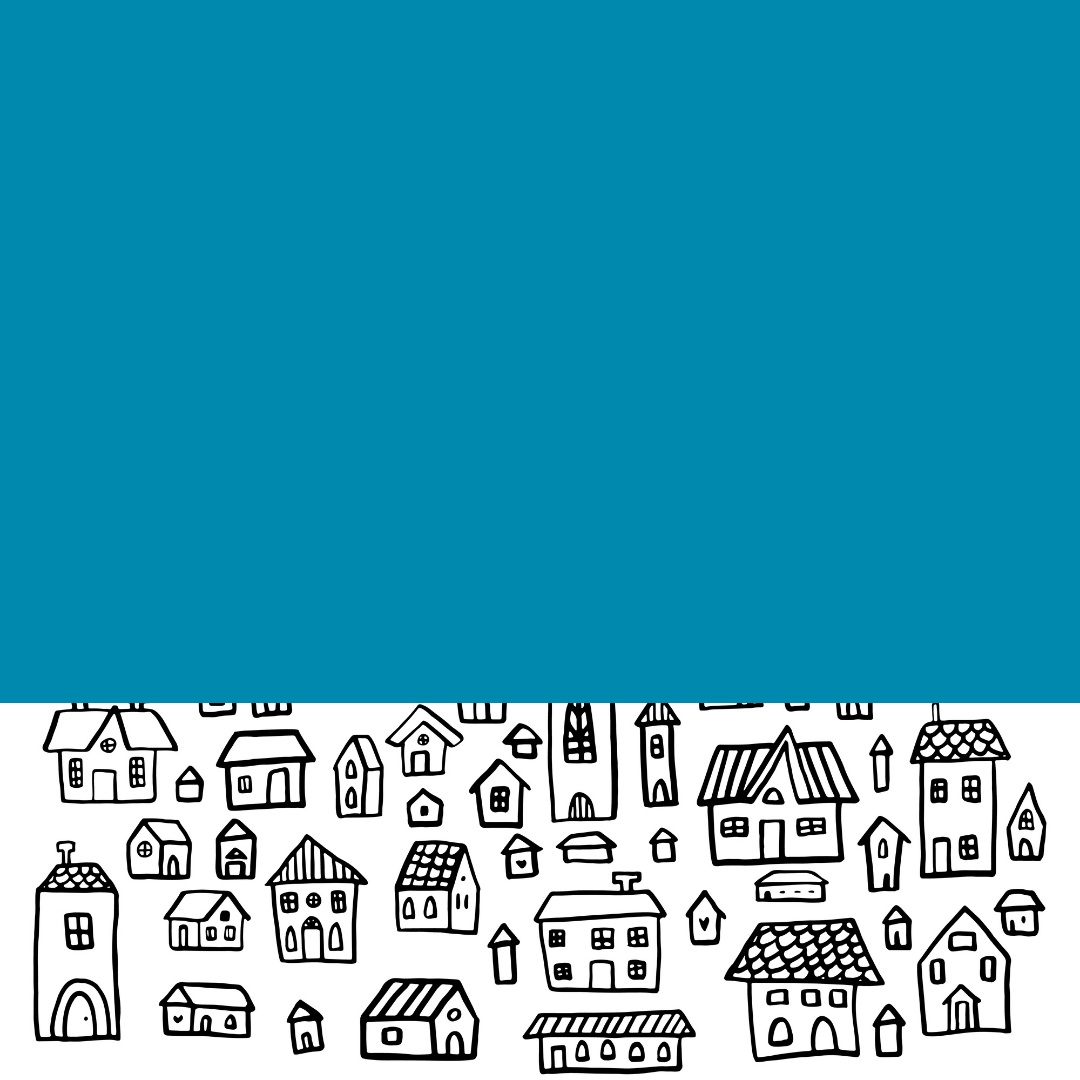
Meet Susan and her family...
Susan is a single mom who works a minimum wage job in a mid-size city. She has two children in elementary school, and her son has asthma. Susan currently lives in a two-bedroom apartment and pays half of her income to cover her rent. She still has to pay for utilities, groceries, her son's medication, and other bills and unexpected expenses. When her son has a really bad asthma attack at school, Susan had to miss work and take him to the hospital. This unexpected event, on top of her missing a day of work, made her unable to pay her rent for the month. Her landlord evicted her, and now she and her family have nowhere to go.
If Susan lived in an apartment that was more affordable for her minimum wage job income, Susan would not have been evicted, and she would have more money to buy other things her family needs. In the United States, it is very difficult for families like Susan's to get housing assistance. Let's dive into how rental assistance works in America.
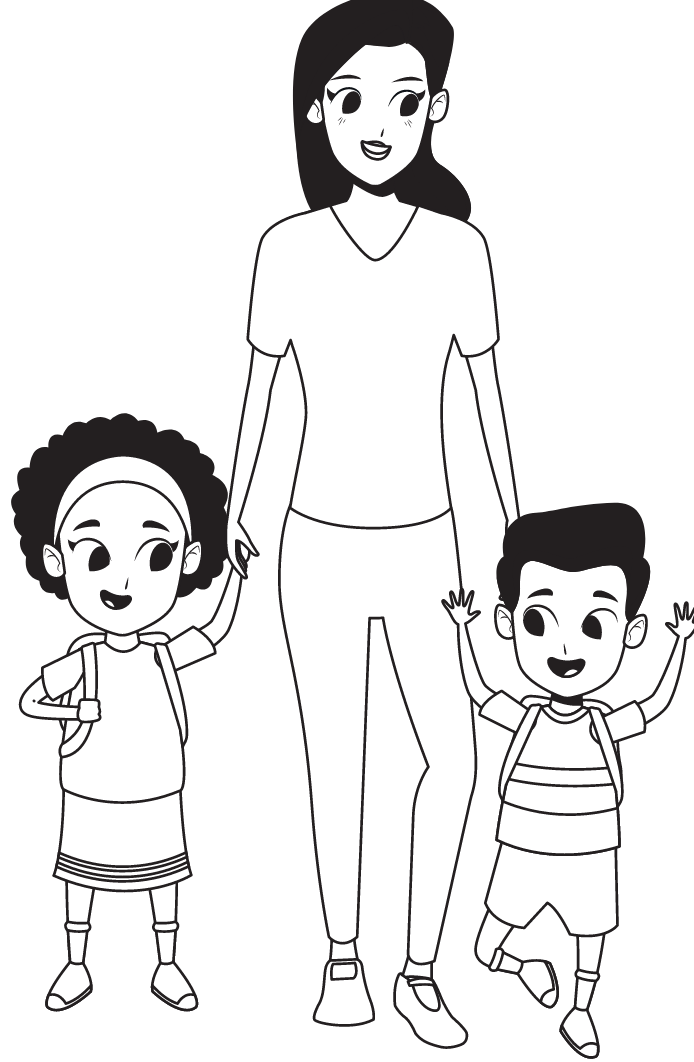
RENTAL ASSISTANCE IN AMERICA
A look at how the United States currently handles rental assistance.

There are multiple programs for rental assistance in America.
- Section 8 Housing Choice Vouchers: Low-income families use a voucher to pay for rent on the private market. The voucher allows for the family to pay only 30% of their income towards rent and the government pays the rest.
- Section 8 Project-Based Vouchers: Low-income families pay 30% of their income to rent in a specific building or property that the federal government has contracted with the owner to rent to low-income families.
- Public Housing: Low-income families pay 30% of their income to live in a building that is owned and operated by their local government.
- Rural Rental Assistance: Low-income families living in Rural Rental Housing or Farm Labor Housing can receive rental assistance from the USDA.
- Elderly and Disabled Assistance: Developments have been constructed exclusively for the elderly or disabled individuals, where the rent is low and/or tenants pay 30% of their income.
While our housing assistance programs seem great, they do not serve nearly as many people as are in need of assistance.
There are approximately 16 million households that are eligible for rental assistance, but do not receive it. Once you apply for rental assistance, it can take years for your application to be seen. The average length of a waitlist for a Section 8 Housing Choice Voucher is 1.5 years, with the longest being longer than 7 years.
This is not just a problem that happens in states that have higher costs of living. In every state, the number of rent-burdened households, meaning households that pay over 30% of their income to rent, outnumbers the number of households receiving rental assistance. The state with the lowest discrepancy, Rhode Island, still has almost twice as many rent-burdened households than households receiving rental assistance. This is a nationwide problem.

Source: Urban Institute
Why do our programs not cover everyone in need?
The answer is simple: rental assistance programs are underfunded. In the United States, we have programs called entitlement programs, which means the government fully funds the program so that every one that is eligible for the assistance is able to get it. Some examples are SNAP (food stamps), Pell Grants for college, Medicaid, and social security. Rental assistance is not an entitlement. Section 8 Housing Choice Vouchers, the biggest rental assistance program, is funded much less than the entitlement programs in our country. This isn't to say that we should not fully fund entitlement programs, because we definitely should, but why do we not consider housing an entitlement?
Why should we care?
Affordable housing is more than just a place to live.

A lack of stable housing affects every part of a family's life.
- Access to food and other basic necessities: Eviction and unstable housing make it harder for families to obtain food, clothing, and medicine. All of these necessities are vital for their health and wellbeing.
- Mental health: Research shows that unstable housing can cause depression in mothers who may feel intense stress and worry, but it also causes adverse physical and mental health effects for all members of the family.
- Employment opportunities: Unstable housing can cause people to be forced to move, causing job loss, especially among low-income workers. Dealing with unstable housing is also linked to lower productivity, and having a harder time finding a job in the first place.
- Educational success: Research shows that unstable housing is the most influential factor in predicting chronic absenteeism for children in school. It is also linked to lower scores on standardized tests, lower proficiency in reading and math, and lower graduation rates.
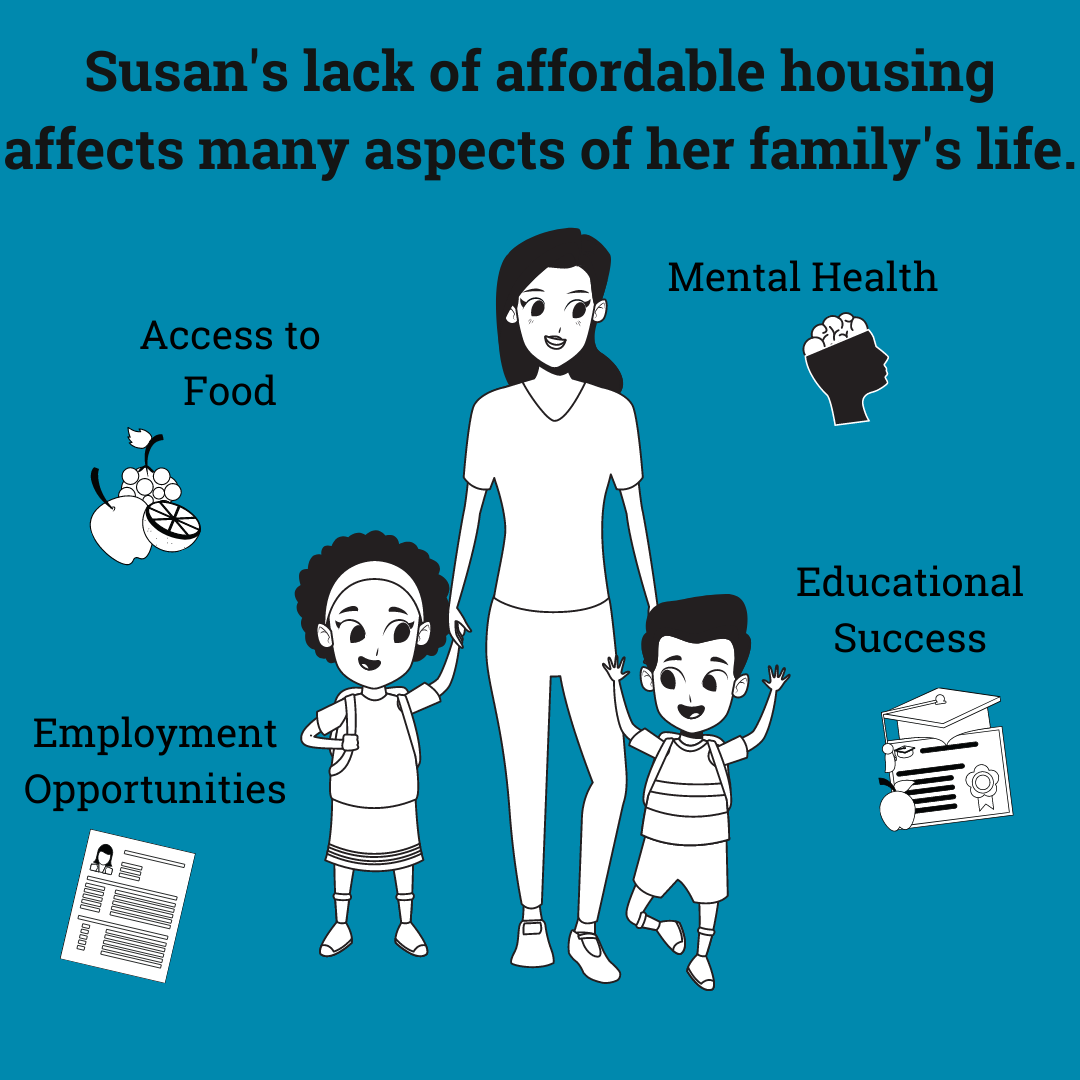
It does not have to be this way
It is possible for the United States to provide rental assistance to all eligible people in the country.


What is a universal housing program?
A universal housing program means that everyone who is in need of rental assistance gets it. Many countries in Europe have programs that provide housing or rental assistance to low-income households, including Finland, the United Kingdom, and France, and Germany.
What would that look like in the United States?
In the United States, the easiest way to implement universal housing would be by providing every eligible family a Section 8 Housing Voucher. This would make Section 8 an entitlement program, like SNAP or Pell Grant. Families could then take that voucher to the private market, find their own place to rent, and only pay 30% of their income for rent. The government would pay the other 70%. If the program ran like this, approximately 16 million more households would have access to affordable housing.
This may sound infeasible since there are a lot of people who qualify for Section 8 and it would cost a lot of money to provide them all with assistance. However, there is momentum for such a program in the United States. President Biden actually campaigned on expanding Section 8 Housing Vouchers to every eligible family. This is possible and America has the resources to provide affordable housing to all who need it.
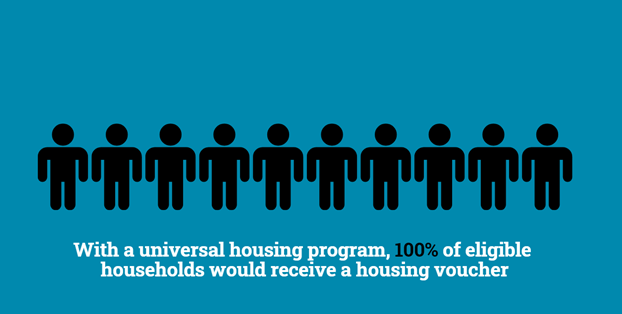
How would we pay for it?
It would cost approximately $41 billion more dollars to give every eligible household a Housing Choice Voucher. While that is a lot of money, that would bring the cost of the program to be on par with how much we pay for SNAP to be an entitlement program. The United States has the resources to fully fund Housing Choice Vouchers by making reforms to the program to cut costs, such as changing the maximum rent landlords can charge, and using taxpayer funds. The cost of people living in poverty due to spending a lot of their income on rent is greater than the cost of the program. When people have more disposable income, the economy is better for all of us. Additionally, the United States provides a lot of monetary benefits for rich people, such as tax entitlements that give over $120,000 each to members of the top 1%. If the United States can afford these large tax entitlements for the rich, we have the ability to pay for affordable housing, we just need to make it a priority.
How can I help make universal housing a reality?
There are many things you can do to get everyone in America access to affordable housing.


1. Call or email your representatives and urge them to support more funding for Section 8 Housing Choice Vouchers.
Your representatives in the federal government have the power to increase funding to provide all eligible families with a housing voucher. It is their job to answer to you, their constituent, so if you want everyone to be able to have access to affordable housing, you should tell them!
Here is a sample script for you to use when contacting your representatives:
Dear Congressperson/Senator Last Name,
My name is Your Name, and I live in your district/state. I am writing/calling you today to urge you to support any legislation that increases funding for Section 8 Housing Vouchers. Only 24% of eligible people actually receive a housing voucher, and waitlists are years long. This leaves millions of families struggling to pay for a roof over their heads. Affordable housing is very important for one's health, and a lack of stable housing affects every part of someone's life. It is our duty to ensure that every American has the opportunity to access safe housing so that they can reach their full potential. I urge you to advocate for fully funding Section 8 Housing Vouchers to support everyone who is eligible and to help those in our community who are struggling the most.
Thank you for your time.
2. Connect with local renter's rights groups to see how you can assist low-income renters in your own community.
A renter's rights group organizes people together to fight for housing justice and to advocate for renters. Most cities should have a group like this that you can connect with to see how you can best support the movement for affordable housing in your community. This could be through mutual aid, attending eviction court, or helping to organize a protest. If you are a renter yourself, it is important for you to know your rights and how to protect yourself from injustice.

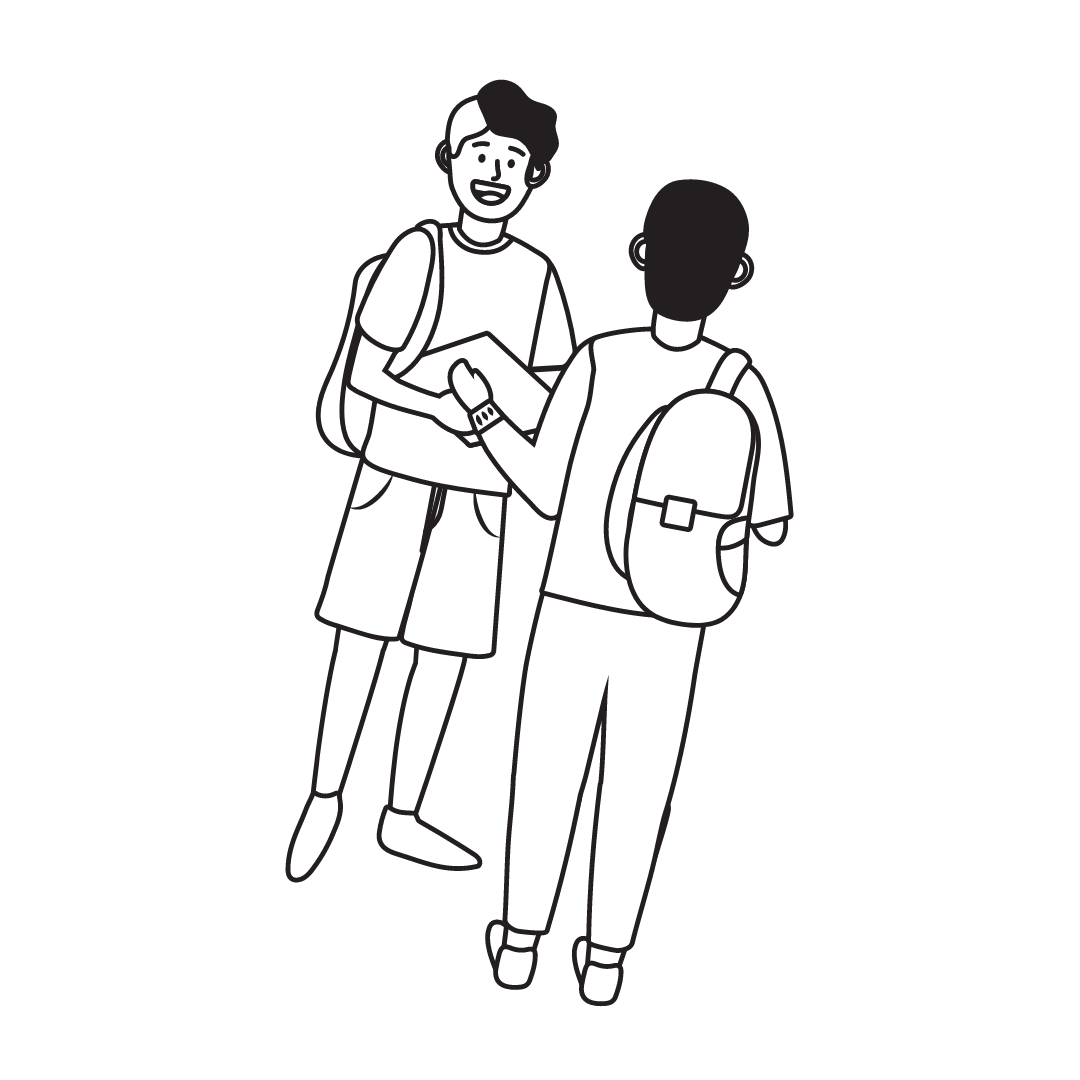
3. Spread the word about universal housing and urge your friends to advocate for low-income renters too.
A lot of people are unaware of how many people are struggling to pay rent and keep a roof over their heads. Now that you have learned about rental assistance and the possibility of a universal housing program, spread the word to your friends. Let them know that this is an issue they should care about, and show them this resource if they want to learn more! Urge them to contact their representatives and continue to spread the word to their friends too.
References
"American Community Survey." United States Census Bureau. https://www.census.gov/programs-surveys/acs/.
Blumgart, Jake. " What an Affordable Housing Moonshot Would Look Like." Slate. July 1, 2016. https://slate.com/business/2016/07/its-time-for-universal-housing-vouchers.html.
Buchheit, Paul. "The Absurd Amount of Entitlements That Go to Rich People. Common Dreams. May 1, 2017. https://www.commondreams.org/views/2017/05/01/absurd-amount-entitlements-go-rich-people.
Carliner, Michael and Marya, Ellen. "Rental Housing: An International Comparison." The Harvard Joint Center for Housing Studies. September 2016. https://www.jchs.harvard.edu/sites/jchs.harvard.edu/files/international_rental_housing_carliner_marya.pdf.
Cunningham, Mary. " Reduce poverty by improving housing stability." The Urban Institute. June 26, 2016. https://www.urban.org/urban-wire/reduce-poverty-improving-housing-stability.
"Department of Housing and Urban Development Public and Indian Housing Tenant-Based Rental Assistance." United States Department of Housing and Urban Development. 2020. https://www.hud.gov/sites/dfiles/CFO/documents/2020CJ-TBRA.pdf.
Desmond, Matthew. Evicted: Poverty and Profit in the American City. (New York: Broadway Books, 2016).
"Federal Rental Assistance Fact Sheets." Center on Budget and Policy Priorities. December 10, 2019. https://www.cbpp.org/research/housing/federal-rental-assistance-fact-sheets#US.
Fergus, Meredith, Sorenson, Nichole, Cheatham, Alexandra, and Rogness, Stephen. "The Impact of Housing Insecurity on Educational Outcomes." Minnesota Office of Higher Education. December 2018. https://www.ohe.state.mn.us/pdf/Impact_Housing_Insecurity_&_Educational_Outcomes.pdf.
"Glossary Term: Entitlement." United States Senate. https://www.senate.gov/reference/glossary_term/entitlement.htm.
"How long are affordable housing waitlists?" Affordable Housing Online. https://affordablehousingonline.com/housing-help/How-Long-Will-My-Wait-Be#:~:text=The%20median%20Housing%20Choice%20Voucher,times%20longer%20than%207%20years.
Lee, Indiana. "How housing insecurity impacts your physical and mental health." Voices of Youth. September 26, 2019. https://www.voicesofyouth.org/blog/how-housing-insecurity-impacts-your-physical-and-mental-health#:~:text=The%20study%20found%20that%20housing,odds%20of%20negative%20health%20outcomes.&text=Struggling%20to%20find%20a%20consistent,family%20members%20of%20all%20ages.
Mathews, Joe. "A real solution to homelessness: Universal housing." Desert Sun. June 25, 2016. https://www.desertsun.com/story/opinion/columnists/2016/06/25/mathews-homelessness-universal-housing/86312822/.
Matthews, Dylan. "76 percent of people who qualify for housing aid don't get it." Vox. May 31, 2014. https://www.vox.com/2014/5/31/5764262/76-percent-of-people-who-qualify-for-housing-aid-dont-get-it.
"National and State Housing Fact Sheet & Data." Center on Budget and Policy Priorities. December 10, 2019. https://www.cbpp.org/research/housing/national-and-state-housing-fact-sheets-data.
"New Study Finds Housing Instability is the Greatest Predictor of Students’ Chronic Absenteeism from School." National Low Income Housing Coalition. December 17, 2018. https://nlihc.org/resource/new-study-finds-housing-instability-greatest-predictor-students-chronic-absenteeism-school.
"Policy Basics: Federal Rental Assistance." Center on Budget and Policy Priorities. November 15, 2017. https://www.cbpp.org/research/housing/federal-rental-assistance.
"Rural Rental Assistance." Benefits.gov. https://www.benefits.gov/benefit/396.
"Section 202 and Section 811 Programs for the Elderly or Persons with Disabilities." National Housing Law Project. https://www.nhlp.org/resource-center/section-202-section-811-programs-for-the-elderly-or-persons-with-disabilities/.
Shroyer, Aaron and Gaitan, Veronica. "Four Reasons Why Employers Should Care about Housing." The Urban Institute. September 11, 2019. https://housingmatters.urban.org/articles/four-reasons-why-employers-should-care-about-housing#:~:text=When%20employees%20cannot%20afford%20to,on%20wages%20or%20turnover%20costs.&text=High%20housing%20costs%20limit%20who,workers%20for%20lower%2Dwage%20roles.
"SNAP Data Tables." United States Department of Agriculture. https://www.fns.usda.gov/pd/supplemental-nutrition-assistance-program-snap.
"Student Aid Overview: Fiscal Year 2019 Budget Request." United States Department of Education. https://www2.ed.gov/about/overview/budget/budget19/justifications/n-sao.pdf.
"The Biden Plan for Investing in Our Communities Through Housing." Biden-Harris Campaign. https://joebiden.com/housing/.
Title image: "Black and white doodle set with cute houses." Tori Card Store on Shuttershock. Standard license. https://www.shutterstock.com/image-vector/black-white-doodle-set-cute-houses-1651812070.
Graphics from Canva.
